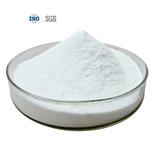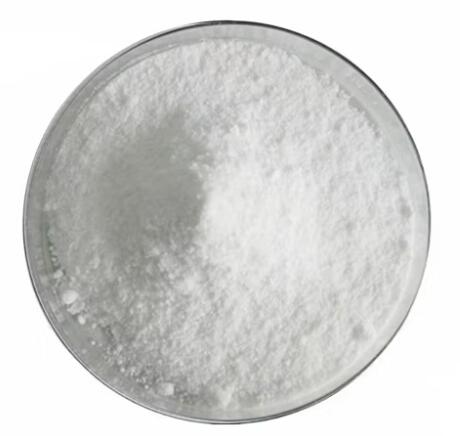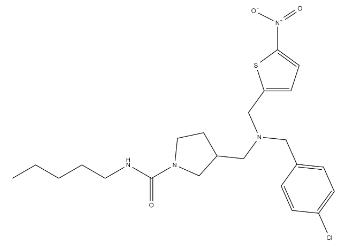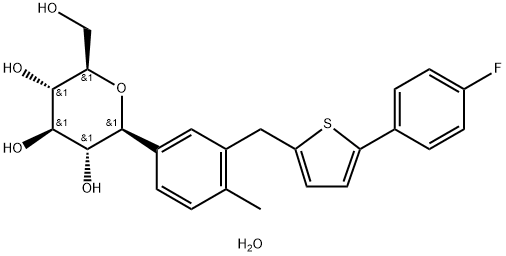Navigating Blood Sugar Control: The Role of Canagliflozin Hemihydrate in Diabetes Care
Apr 10,2024
Introduction
Canagliflozin Hemihydrate has emerged as a beacon of hope in the ongoing battle against type 2 diabetes, a condition that affects millions worldwide. As a critical member of the sodium-glucose cotransporter 2 (SGLT2) inhibitors class, it introduces a novel therapeutic avenue, diverging from traditional diabetes treatments to offer a unique and effective approach to controlling blood sugar levels.

Fig. 1 Characteristics of Canagliflozin Hemihydrate
Chemical Composition and Properties
At the heart of Canagliflozin Hemihydrate's effectiveness lies its distinctive chemical structure, enabling selective inhibition of the SGLT2 protein. This protein's role in glucose reabsorption within the kidneys is pivotal, making its inhibition a target for controlling blood glucose levels. Canagliflozin Hemihydrate's molecular composition, including water molecules indicative of its hemihydrate form, plays a crucial role in its solubility, stability, and overall pharmacokinetic profile. With a formula of C24H25FO5S·?H2O, the drug's molecular arrangement is meticulously designed for potent, selective action. This precision in composition facilitates its absorption, distribution, metabolism, and excretion processes, underlying its efficiency in diabetes management. The deliberate chemical engineering behind Canagliflozin Hemihydrate underscores the innovative approach to drug development, targeting the molecular dynamics of diabetes at its core.
Mechanism of Action
Canagliflozin Hemihydrate's action mechanism offers a glimpse into its revolutionary approach to managing hyperglycemia. By targeting the SGLT2 protein in the kidneys, it prevents glucose from being reabsorbed into the bloodstream. Instead, glucose is excreted through urine, effectively reducing blood glucose levels. This insulin-independent pathway to blood sugar regulation provides a critical advantage, particularly for individuals whose diabetes remains uncontrolled by conventional treatments. Unlike other medications that stimulate insulin secretion or enhance insulin sensitivity, Canagliflozin Hemihydrate operates through a distinct, innovative mechanism. This not only broadens the therapeutic options available for diabetes management but also introduces a method that could potentially mitigate some of the limitations associated with insulin-dependent treatments. The ability to lower blood sugar levels without directly influencing insulin opens up new avenues for research and application in diabetes care, demonstrating the drug's pivotal role in modern diabetic treatment paradigms.
Clinical Applications
The approval of Canagliflozin Hemihydrate for managing type 2 diabetes marks a milestone in the evolution of treatment options. Clinical trials underscore its capacity to not only lower blood sugar levels but also offer ancillary benefits, such as weight loss and reduced blood pressure, enhancing overall patient well-being. Its application extends beyond mere glycemic control, positioning it as a cornerstone in comprehensive diabetes management strategies. The exploration of Canagliflozin Hemihydrate's potential in treating other conditions, such as heart failure and chronic kidney disease, attests to its versatility and possible impact on a wider spectrum of diseases. This expanding clinical profile highlights the drug's significance, offering insights into its role in not just managing diabetes but potentially improving outcomes in related cardiovascular and renal conditions. The acknowledgment of Canagliflozin Hemihydrate by medical guidelines further reinforces its importance, suggesting a broad consensus on its value in treating diabetes and possibly other conditions.
Benefits and Risks
While Canagliflozin Hemihydrate offers substantial benefits in managing type 2 diabetes, including improved glycemic control and potential cardiovascular and renal advantages, it is not without risks. Common side effects include urinary tract infections and yeast infections, attributed to increased glucose excretion. More serious risks involve dehydration, hypotension, and a rare risk of diabetic ketoacidosis, a serious condition that requires immediate medical attention. The balance between its benefits and risks necessitates careful patient selection and monitoring, ensuring it is used optimally and safely.
Conclusion
Canagliflozin Hemihydrate stands out as a pivotal tool in managing type 2 diabetes, offering a unique mechanism of action and substantial clinical benefits. As research continues to unfold its potential, it holds promise for broader therapeutic applications, reinforcing its importance in the landscape of diabetes treatment.
References
[1]Kotappa S B B, Bhatta R G, Rudragangaiah S. New Stability Indicating LC Method for Novel Antidiabetic Drug Canagliflozin Hemihydrate Quantification; Development and Validation[J]. Pharmaceutical Methods, 2019, 10(2).
[2]Bhatta R G, Rudragangaiah S, Kotappa S B B. Formulation, optimization, and evaluation of in-situ gelling liquid oral formulation of a novel antidiabetic drug: canagliflozin[J]. Indian J. Pharm. Educ. Res, 2019, 53: 121-128.
- Related articles
- Related Qustion
- Canagliflozin hemihydrate: Application, Synthesis, Toxicity and safety Apr 3, 2023
Canagliflozin hemihydrate (Invokana) is a C-glucoside with a thiophene ring that is an orally available inhibitor of sodium-glucose transporter 2 (SGLT2) with antihyperglycemic activity.
Canagliflozin heMihydrate
928672-86-0You may like
Canagliflozin heMihydrate manufacturers
- Canagliflozin Hemihydrate
-

- $0.00 / 1G
- 2025-01-09
- CAS:928672-86-0
- Min. Order: 1G
- Purity: More Than 99%
- Supply Ability: 100kg/Month
- Canagliflozin heMihydrate
-

- $10.00 / 1KG
- 2024-12-03
- CAS:928672-86-0
- Min. Order: 100KG
- Purity: 99%
- Supply Ability: 100 mt
- Canagliflozin hemihydrate
-

- $0.00 / 1kg
- 2024-11-26
- CAS:928672-86-0
- Min. Order: 1kg
- Purity: 99%,single impurity<0.1
- Supply Ability: 1 ton






